82 Donors Supporting the Entire Organization
82 people donating what they can are sustaining Reader Supported News for June. That’s out of 240,619 people who have come.
Stop for a moment and chip in.
Please.
Marc Ash
Founder, Reader Supported News
If you would prefer to send a check:
Reader Supported News
PO Box 2043 / Citrus Heights, CA 95611
Follow us on facebook and twitter!
Live on the homepage now!
Reader Supported News
Experts say that no matter how righteous, extremist protests are risky: they may turn people against the cause
In Charlotte, North Carolina, the message was more explicit: “If abortions aren’t safe then you aren’t either,” read the words scrawled in red paint across another center, which also had its windows broken.
The same message was found on the walls of “pregnancy crisis centers” in Texas and Wisconsin in May, and another attack took place on a similar institution in Washington, also in May. The attacks on these centers – which try to dissuade women from seeking abortions – are believed to be linked to Jane’s Revenge, an extremist, militant pro-choice group.
No one has been injured during these attacks, but the methods have been extreme: vandals have thrown molotov cocktails, committed arson, damaged property and made threats. At a time of rapidly increasing abortion restrictions in the US – and an upcoming supreme court decision this summer that is expected to result in total abortion bans in as many as 26 states – can more violence be expected?
After the attack in Wisconsin, a letter signed by “Jane’s Revenge” was sent to a Bellingcat journalist laying out a kind of mission statement, and threatening further action. “This is not a mere ‘difference of opinion’ as some have framed it,” the letter said. “We are literally fighting for our lives. We will not sit still while we are killed and forced into servitude.”
The letter also demanded that “anti-choice establishments” – institutions that have a reputation for trying to lure women into unwanted pregnancies and spreading misinformation about the impacts of abortion – to disband within 30 days, or else face more violence.
“Wisconsin is the first flashpoint,” the letter said. “But we are all over the US, and we will issue no further warnings … We will not stop until … the inalienable right to manage our own health is returned to us.”
Mary Ziegler, a law professor at UC Davis with an expertise in the abortion movement, believes the attacks can be read as an expression of distrust in the government, and a loss of faith in democratic institutions.
“A lot of people – conservatives and progressives – have lost faith in a lot of democratic institutions. A lot of people believe the supreme court is partisan and illegitimate,” she said.
She notes some of the public discourse around the supreme court in recent years: Donald Trump referred to supreme court justices as “my judges” and was specific about the ways they would serve his aims. “He would just come out [and say] ‘my’ judges will give you specific outcomes on abortion, guns and a variety of other things,” said Ziegler.
The supreme court’s impending rulings in a number of high-profile cases, from abortion to gun rights – in quick succession since Trump’s appointments of justices Amy Coney Barrett, Brett Kavanaugh and Neil Gorsuch – have only deepened the public’s impression of partisanship, Ziegler said.
“This is not something that’s unfolding over a very long period of time. And [the supreme court] is rendering decisions that are all helping conservatives,” she said. “If the court just does things that help conservatives, people will ask ‘why is there a partisan body that isn’t elected? Why is there a partisan body with lifetime appointments?’”
What is surprising about these recent attacks, however, is that the vast majority of violent protest tactics – including around abortion – have come, historically, from the right of American politics. Rightwing protests over lockdown, racial justice and abortion have seen armed militias taking justice into their own hands, even storming the US Capitol. The tactics of the right on abortion have been similarly extreme: 11 people were murdered by anti-choice protesters between 1993 and 2016, and another 26 murders were attempted. The tactics of anti-abortion advocates have included bombings, arson, death threats and hate mail.
Are violent protests successful?
Ziegler believes that some people on both the left and the right might feel they are enacting some sort of vigilante justice when they resort to violent protest tactics around abortion. At present, pro-choice advocates may be seeing an apparent mismatch between public opinion and legislation: 61% of Americans believe abortion should be legal in all or most cases, yet states are enforcing increasingly extreme restrictions.
These tactics, however, are not commonly successful, academics say – even if protesters feel their grievances are valid. Take the example of American civil rights protests in the 1950s and 1960s.
Omar Wasow studied the political consequences of different kinds of protests during that period: violent and non-violent. He found violent protest seemed to have the unintended effect of chilling support for the movement, leading to more votes for conservatives, while peaceful protest apparently had the effect of liberalising white voters.
“Even if we think violence might be justified in response to state repression under segregation, or Jim Crow, it may produce outcomes entirely contrary to what activists were fighting for,” said Wasow. “Norm-violating tactics can be repulsive to put to potential moderate allies.”
Ziegler said the same has been true for the anti-abortion movement, whose own violence has rarely been effective.
“I don’t think that violence was particularly effective for conservatives,” she said. “It’s not wrong to say that progressives need to be willing to use the strategies that conservatives have used. But committing illegal acts of violence has not historically been why the anti-abortion movement has succeeded.”
Instead, she said, the movement has succeeded as well as it has due to big, long-term, structural changes: essentially changing the rules of the game. “They have gotten involved in changing the rules of campaign finance, they have changed access to the vote, and changed how the supreme court confirmation process works.”
“People often focus on a narrow period of time and say, ‘Oh, look at how all of this success was made [in a small period],’ but there’s really decades of activism that’s slowly building the kind of social and political capital to make change happen,” Wasow said.
With popular opinion seemingly on the side of keeping abortion legal at least in some instances, such tactics could simply sully the aims of the cause, Ziegler warned.
“If you have majority support for what you stand for, and the message you send is, ‘Who cares, we’re gonna go out and commit acts of violence,’ that will probably also be counterproductive.”
 Polish President Andrzej Duda, left, shakes hands with Romania's President Klaus Iohannis at the end of the Bucharest Nine (B9) Summit at the Cotroceni Presidential Palace in Bucharest, Romania, Friday, June 10, 2022. (photo: Vadim Ghirda/AP)
Polish President Andrzej Duda, left, shakes hands with Romania's President Klaus Iohannis at the end of the Bucharest Nine (B9) Summit at the Cotroceni Presidential Palace in Bucharest, Romania, Friday, June 10, 2022. (photo: Vadim Ghirda/AP)
Friday's summit in Bucharest provided a platform for NATO’s Eastern members to discuss regional security issues and forge a united voice within the 30-member security alliance. Those attending included Romania, Poland, Hungary, Bulgaria, the Czech Republic, Slovakia, Estonia, Latvia, and Lithuania.
“We need to make sure that NATO is able and prepared to respond effectively and calibrated to the threats it faces,” Romanian President Klaus Iohannis told reporters after Friday’s meeting. “The alliance needs to be able to defend every inch of its territory.”
“The result we are pursuing is a consolidated NATO presence on the Eastern Flank, united and coherent, robust, credible and sustainable, especially on the Black Sea — the most exposed to Russia’s threats,” Iohannis added.
Three NATO members — Bulgaria, Romania and Turkey — border the Black Sea, which has turned into a key battleground in the war in Ukraine.
NATO is set to hold a “Strategic Concept” summit at the end of June in Madrid to reaffirm its values and purpose and to map out future goals.
Poland’s President Andrzej Duda said Friday that “we are also counting on an increase of U.S. presence in our part of Europe” and that he wants the number of NATO troops in each Eastern Flank country to be increased.
“We want the enhanced forward presence that we have today on NATO’s eastern flank to be extended," he said. “We want the existing battalion groups to be transformed into brigade groups.”
Duda said a brigade group has 3,000 troops, which would mean a “significant and visible strengthening.”
After Russia’s invasion of Ukraine, NATO bolstered its presence on the Eastern Flank by adding four multinational battle groups to Bulgaria, Hungary, Romania and Slovakia. It brings the total number of battle groups to eight, which stretch from the Black Sea in the south to the Baltic Sea in the north.
NATO Secretary-General Jens Stoltenberg, who was set to join the leaders in Bucharest, joined the forum via video after contracting shingles. Stoltenberg stressed the importance of continued defense spending to the Eastern Flank leaders and commended “the fact that many of them meet or exceed the 2% target of GDP on defense spending.”
Iohannis said he supports “strengthening NATO relations with partners in the region, who are deeply exposed to Russian pressure and aggression” and expressed “firm support for NATO’s ‘Open Doors’ policy and for Sweden and Finland’s” bids to join NATO.
“The accession of these states will contribute to strengthening the security of the Alliance as a whole,” he said.
During the Cold War, the Eastern Flank nations that constitute the Bucharest Nine group — which was launched by Romania and Poland in 2015 — were all controlled by Moscow, with the three Baltic states incorporated into the Soviet Union. Today they are all members of NATO and the European Union.
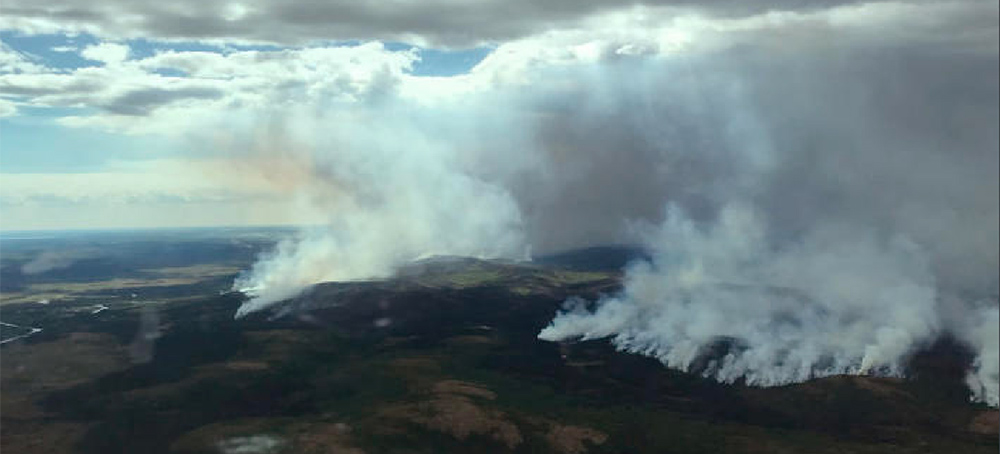 In this aerial photo provided by the BLM Alaska Fire Service, the East Fork Fire burns about 25 miles north of St. Mary's, Alaska on June 2, 2022. (photo: Pat Johnson/BLM Alaska Fire Service/AP)
In this aerial photo provided by the BLM Alaska Fire Service, the East Fork Fire burns about 25 miles north of St. Mary's, Alaska on June 2, 2022. (photo: Pat Johnson/BLM Alaska Fire Service/AP)
This came a day after dozens of elders and residents with health concerns voluntarily evacuated because of smoke from the nearby fire.
Officials on Friday put the communities of St. Mary’s and Pitkas Point into “ready” status, meaning residents should gather important items they would want to have with them if they have to evacuate, said U.S. Bureau of Land Management Alaska Fire Service spokesperson Beth Ipsen by text. That would be followed by “set,” or getting a go-bag ready and leaving if the “go” order is given.
The fire is consuming dry grass, alder and willow bushes on the largely treeless tundra as gusts of up to 30 mph (48.28 kph) are pushing the fire in the general direction of St. Mary’s and Pitkas Point, Yup’ik subsistence communities with a combined population of about 700 people and about 10 miles (16 kilometers) apart.
There are about 65 firefighters battling the blaze, with about 40 more expected later Friday, Ipsen earlier said by phone.
The fire had not grown much since Thursday and was still estimated at 78 squares miles (202 square kilometers). The northerly winds pushed the fire to within 5 miles (8 kilometers) of St. Mary's, officials said in a late Friday update.
Ipsen said she was not aware of any structures that have been lost.
Crews cleared brush and other fuel from a swath of land in the path of the flames, and air tankers dropped retardant between the line and St. Mary’s as another buffer. Other aircraft had been dropping water on the fire until another fire broke out north of a nearby community, Mountain Village.
Climate change has played a role in this historic fire, said Rick Thoman, a climate specialist with the University of Alaska Fairbanks’ International Arctic Research Center.
He said based on records from the Alaska Fire Service dating back to the 1940s, this is the largest documented wildfire in the lower Yukon River valley. There are much bigger fires recorded just 50 or 60 miles (97 kilometers) north of St. Mary’s, but those burned in boreal forests.
The area where the tundra fire is burning, the Yukon-Kuskokwim Delta, lost its snowpack early this year, leaving grass and other vegetation longer to dry out. Coupled with the warmest period on record in the region recently, it provided for the perfect storm for this fire that was started by lightning on May 31.
“Climate change didn’t cause the thunderstorm that sparked that fire, but it increased the likelihood that the ambient conditions would be receptive,” he said.
The southwest Alaska hub community of Bethel, about 100 miles (160.93 kilometers) southeast of St. Mary’s, is the closest long-term weather station.
For the period covering the last week of May and the first week of June, Bethel had its warmest temperatures on record this year, 9 degrees F (12.78 degrees C) above its normal 48 degrees F (8.89 degrees C), Thoman said.
About 80 village elders and others with health concerns were relocated to the Alaska National Guard Armory in Bethel on Thursday, said Jeremy Zidek, spokesperson for the Alaska Division of Homeland Security and Emergency Management.
Two companies that provide commuter air service in roadless western Alaska flew the passengers to Bethel.
One of those was Yute Commuter Services, which provided 12 flights out of St. Mary’s on its planes that seat six, said Andrew Flagg, the company’s station manager in Bethel.
On Friday, he said they were asked to deliver drinking water to the community so it could be given to the firefighters.
St. Mary’s and Pitkas Point, which is at the confluence of the Andreafsky and Yukon rivers, are located about 450 miles (724 kilometers) west of Anchorage.
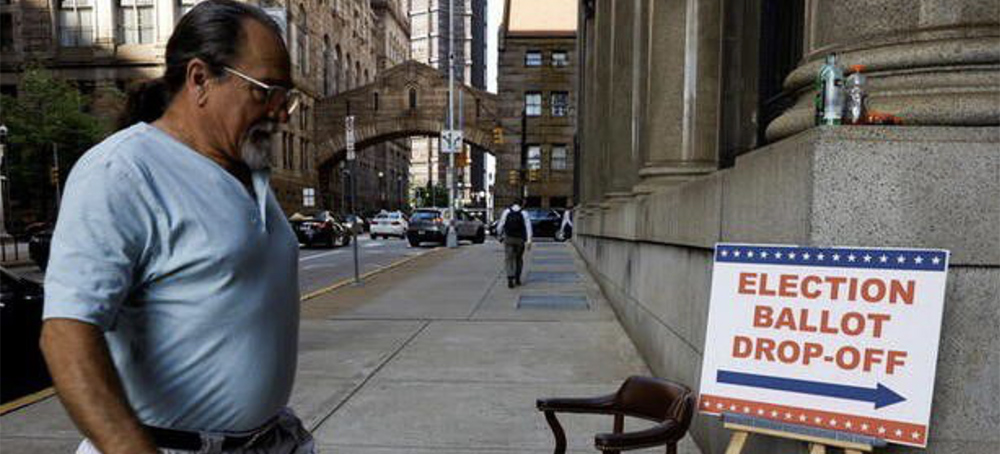 Voters arrive to drop off mail-in ballots at an election site in Pittsburgh, Pennsylvania, U.S. May 17, 2022. (photo: Quinn Glabicki/Reuters)
Voters arrive to drop off mail-in ballots at an election site in Pittsburgh, Pennsylvania, U.S. May 17, 2022. (photo: Quinn Glabicki/Reuters)
U.S. Supreme Court allows counting of undated mail-in ballots in Pennsylvania
WASHINGTON, June 9 (Reuters) - A divided U.S. Supreme Court on Thursday allowed the counting of undated mail-in ballots in an undecided 2021 election for a Pennsylvania judgeship in a case that again revealed the tensions among the justices over voting rights.
The decision by the justices against David Ritter, a Republican candidate for a judgeship on the Lehigh County Court of Common Pleas, means that Pennsylvania officials can count 250 mail-in ballots in that election that lacked a handwritten date. Ritter had sued the county board of elections over concerns he would lose the race if those votes were counted.
Three conservative justice - Samuel Alito, Clarence Thomas and Neil Gorsuch - dissented, saying the court should have blocked the votes from being counted. The court has a 6-3 conservative majority. The nine justices have often split on voting issues, usually on ideological lines dividing the court's conservatives from their liberal colleagues.
Alito wrote of his concern that the lower court ruling involved in the case "could well affect the outcome" of elections being held in November. In Pennsylvania, there is a closely watched U.S. Senate race between Republican Mehmet Oz and Democrat John Fetterman that could help determine which party controls the chamber.
The action by the justices left in place a May ruling by the Philadelphia-based 3rd U.S. Circuit Court of Appeals that the undated ballots could be counted.
Litigation over Pennsylvania's mail-in ballot rules was a feature of the 2020 presidential election in which the state was a key battleground. Republican then-President Donald Trump lost the state to Democratic challenger Joe Biden, with the fight over mail-in ballots that favored Biden helping to fuel Trump's false claims of widespread voter fraud.
The 3rd Circuit ruled in Ritter's case that under a provision of the federal Civil Rights Act, the failure to include the date on a mail-in ballot is "immaterial" to whether the ballot was valid and therefore should be counted. The provision in question is aimed at protecting the right to vote.
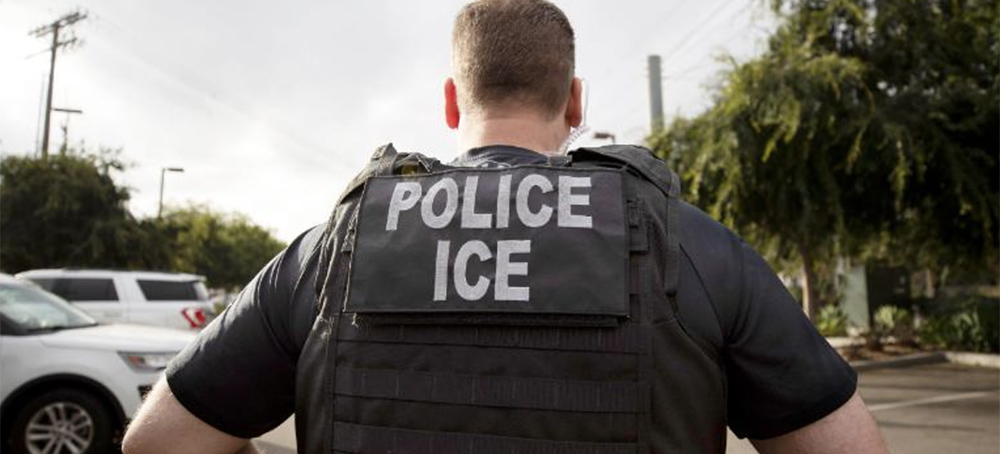 A US Immigration and Customs Enforcement officer looks on during an operation in Escondido, California, July 8, 2019. (photo: CNN)
A US Immigration and Customs Enforcement officer looks on during an operation in Escondido, California, July 8, 2019. (photo: CNN)
Last year, the Department of Homeland Security released guidelines that directed Immigration and Customs Enforcement agents to arrest immigrants deemed public safety or national security risks and recent border crossers. Friday’s ruling throws out those guidelines, marking the latest legal setback for the Biden administration on immigration.
The ruling takes effect in seven days.
Judge Drew Tipton of the Texas Southern District Court found that while the federal government has discretion, the guidelines bind officials in a “generalized, prospective manner.”
“True, the Executive Branch has case-by-case discretion to abandon immigration enforcement as to a particular individual. This case, however, does not involve individualized decisionmaking. Instead, this case is about a rule that binds Department of Homeland Security officials in a generalized, prospective manner—all in contravention of Congress’s detention mandate,” wrote Tipton, a Donald Trump appointee.
The ruling stems from a lawsuit brought by the states of Texas and Louisiana. The case concerns a provision in immigration law that says undocumented immigrants who committed crimes will be taken into ICE custody after they are released. The Biden administration’s memo sought to prioritize ICE’s resources on detaining undocumented immigrants based on the nature of the crimes they had committed.
Tipton previously ruled against a January interim memo that curtailed enforcement measures. The latest ruling concerns similar guidelines issued last September.
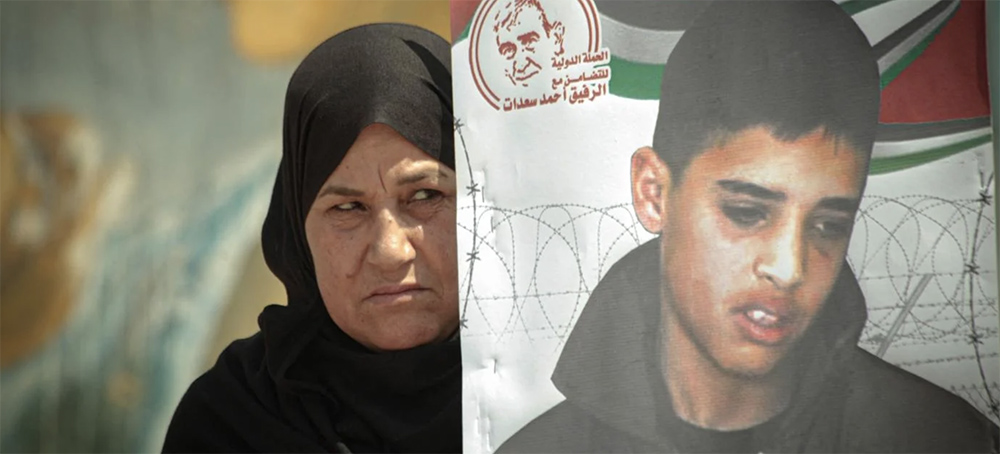 Palestinians take part in a protest in solidarity with prisoners in Israeli jails, in front of the Erez Crossing in Beit Hanoun in the northern Gaza Strip. (photo: Reuters)
Palestinians take part in a protest in solidarity with prisoners in Israeli jails, in front of the Erez Crossing in Beit Hanoun in the northern Gaza Strip. (photo: Reuters)
Public Committee Against Torture in Israel says after 30 years it has concluded Israeli authorities not interested and unable to stop abuse of Palestinians
The Public Committee Against Torture in Israel (PCATI) said on Friday it had demanded that Israelis involved in torture be tried as part of an investigation by the Hague-based ICC over suspected war crimes committed by Israel in the occupied Palestinian territories.
It said that after 30 years of fighting torture it had “reached the unfortunate conclusion” that Israel has no wish to end torture, honestly investigate victims' complaints and prosecute those responsible.
"For us, this is a necessary and obligatory step today in our struggle for the moral image of Israeli society, and for the sake of justice for the victims we represent," it said in a statement.
Established in 1990, the PCATI has represented and worked to protect Israelis, Palestinians, refugees and migrants who have suffered torture and inhuman or degrading treatment in detention.
The PCATI noted that over 1,300 complaints of torture victims had been filed with Israeli law enforcement authorities between 2001 and 2021 in the belief that the system will fulfil its duty, conduct fair and exhaustive investigations and do justice to the victims.
However, the group said, that led to zero indictments and just two criminal investigations - including in cases where “unequivocal evidence of serious violations of the law” has been collected.
“The law in Israel backs up the culture of falsehood and cover-up that still exists in the security system,” the PCATI said.
Tal Steiner, PCATI’s executive director, told Middle East Eye that appealing to the international court is a very radical step.
“We understood after 30 years that the system of Israeli courts is unwilling and unable to create change. They have a culture of immunity,” she said.
“We are the first Israeli organisation to take such a step and we expect very hard and difficult reactions.”
The PCATI appeal represents 17 clients who Steiner says “went through very severe physical torture”.
“All of their complaints were rejected in Israel. Maybe finally justice can be achieved for them in the international court,” she said.
Unlike the Palestinian Authority, Israel is not a signatory of the ICC’s Rome Statute, which the country says means the court has no jurisdiction there.
However, the ICC prosecutor in March 2021 formally began probing war crimes allegedly committed in the occupied Palestinian territories – by both Israel and Palestinian groups such as Hamas.
Then in April 2022, the International Federation of Journalists, the Palestinian Journalists Syndicate and the International Centre of Justice for Palestinians filed a complaint with the ICC alleging that Israel's "systematic targeting" of Palestinian journalists and its failure to investigate their killings amounts to war crimes.
When Israeli forces killed Al Jazeera journalist Shireen Abu Akleh in the occupied West Bank's Jenin last month, the Palestinian Authority asked the ICC to add her case to other alleged crimes being investigated.
Investigations are opened by the ICC in places where the domestic authorities are unable or unwilling to probe allegations of abuse. Israel has previously said it will not cooperate with any ICC investigation.
The PCATI application is submitted in cooperation with the International Federation for Human Rights (FIDH), an organisation that unites 192 human rights organisations from around the world.
"Israeli security agents and other state officials have systematically tortured, degraded, and inhumanely treated Palestinian individuals suspected of involvement in national security crimes," said Alice Mogwe, FIDH president.
"They have unlawfully deported them from the Palestinian territories into Israel for the purpose of such treatment. They have denied them the fundamental right to a fair trial."
The PCATI is not the first Israeli human rights organisation to conclude that the country's authorities are unwilling and unable to investigate abuses. In 2016, leading human rights group B'Tselem ceased submitting complaints to the Israeli army regarding the alleged mistreatment of Palestinians, complaining the system's real function was to cover up abuses.
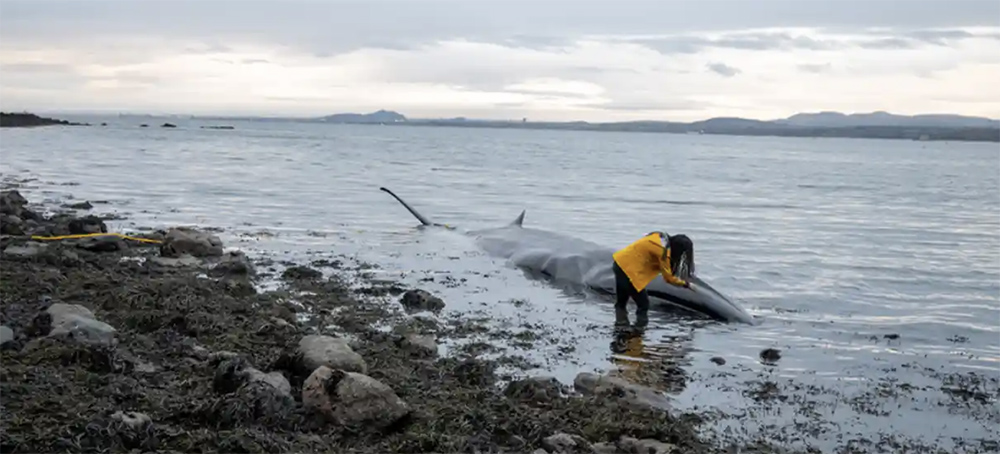 In the aftermath of 9/11, scientists noticed a curious impact on the stress hormones of North Atlantic right whales. (photo: Channel Four)
In the aftermath of 9/11, scientists noticed a curious impact on the stress hormones of North Atlantic right whales. (photo: Channel Four)
Their use is linked to the rise in whale strandings on British beaches, but partial bans keeps letting industry off the hook
So often we think of the golden age of whaling as being over. Japanese and Icelandic whaling ships are now pariahs in the international community. But too often, out of sight is out of mind, and it remains easy to ignore the impact of our actions above ground on marine life. However, whales are increasingly forcing us to take note, as more of them than ever are beaching on our shores.
Whales have always beached across UK coastlines, but there is nothing natural about this latest surge in whale deaths, which is why we decided to shadow marine stranding investigators (Scottish Marine Animal Stranding Scheme in Scotland and the Cetacean Strandings Investigation Programme in England and Wales) exploring the rise in whale strandings on our island for Channel 4 – think CSI but for cetaceans.
When whales beach, especially large ones, it’s very likely that they will beach again. Their bodies are designed to work in water, but on land their sheer size crushes their insides and they start to boil alive. That’s part of the reason why there is a mad dash by British Divers Marine Life Rescue to get beached whales back into the water before their injuries become too great and they inevitably beach again.
That’s how I found myself face to face with a dead sei whale at the foot of Scotland’s most famous human-made landmark: the Forth Bridge. The whale had beached just a day earlier and we had tried to get to it then, but just as we arrived the team refloated it. We had hoped that it might survive its first beaching, but this time, the endangered animal – the world’s third largest species of whale – was washed up dead.
One of the reasons I went into television was a visceral understanding of the power of an image. And this image spoke for itself. A majestic mammoth of a creature taking its final resting place in the shadows of industrialisation.
As a palaeoanthropologist, I’m used to seeing dead things, but the dead that I deal with are long dead – bones, not flesh. When you see flesh, it adds a sense of immediacy. I was supposed to be presenting to camera that day; instead I struggled to muster the energy. I felt utterly defeated by the sight.
For many of us, the call to “save the whale” is a cause we are sympathetic to. But too often, the practical steps we need to take to get there – whether it’s reducing climate change, ship strikes, noise or sonar – stump us. Those last few might appear complicated at first glance and would affect our way of life too much (not true), and tackling the first one has us dilly-dallying on the world stage. But what about chemical pollution, an issue very much in our self-interest?
It is imperative that we understand that whales are the canary in the coalmine for our relationship with chemical pollutants. Too many “forever chemicals”, or PFAS, still persist in nature, nicknamed as such because they barely degrade. PCBs are one such chemical, and despite them being banned 40 years ago, killer whales are still dying in our waters from PCB poisoning. So deadly is the long-term impact that researchers suspect it is responsible for the crash in the birthrate we have seen in our only resident UK killer whale pod – the “West Coast Community” – which hasn’t had a calf born in 25 years.
Legacy chemicals are the gift that keeps on giving, and by the time we understand what they do to the environment, wildlife and our health they are already in the system – so we can’t afford to dawdle. That’s why our heel-dragging on plastic pollution is so frustrating – it’s everywhere and found in everything from salt to human lungs. Terrifying preliminary research is now linking plastics to cancer, Alzheimer’s disease and infertility in men.
It’s in our interest to demand of our leaders better oversight and research. To this end, 30 NGOs have written to the government asking for a ban on the non-essential use of PFAS. The problem is that when only some of these chemicals are banned, manufacturers just switch to others that are only slightly chemically different.
The EU appears to be going in the right direction, and it’s vital that as one of the most prominent island nations we not only follow suit, but lead this fight. So if you care about saving the whales (and your health), write to your MP and ask them to support this cause.
It’s time to stop asking, “What killed the whale?” and start looking in the mirror for answers.
Special Coverage: Ukraine, A Historic Resistance
READ MORE
Follow us on facebook and twitter!
PO Box 2043 / Citrus Heights, CA 95611


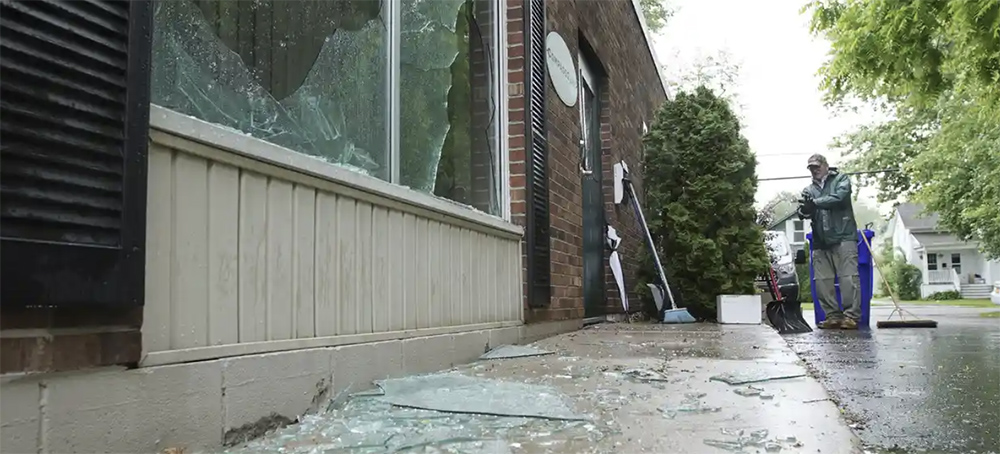
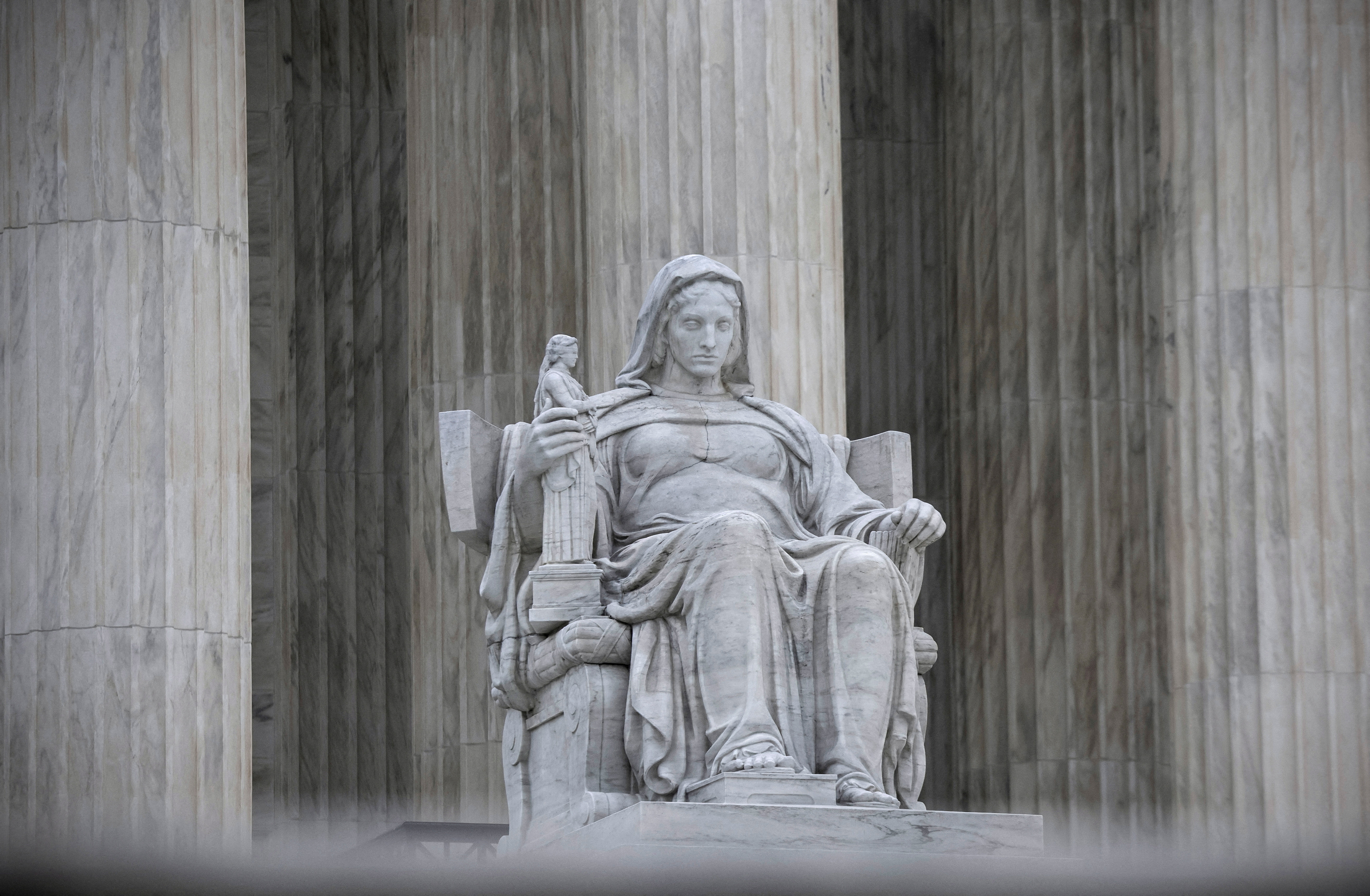


No comments:
Post a Comment
Note: Only a member of this blog may post a comment.